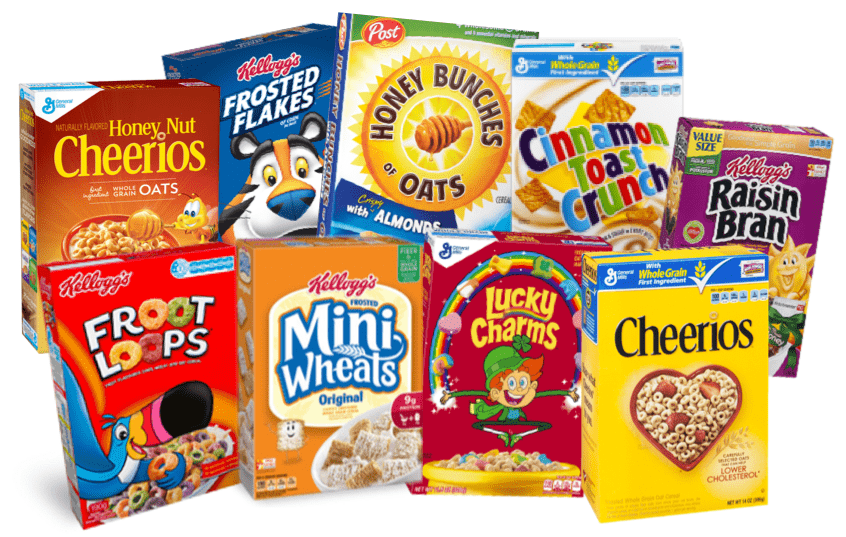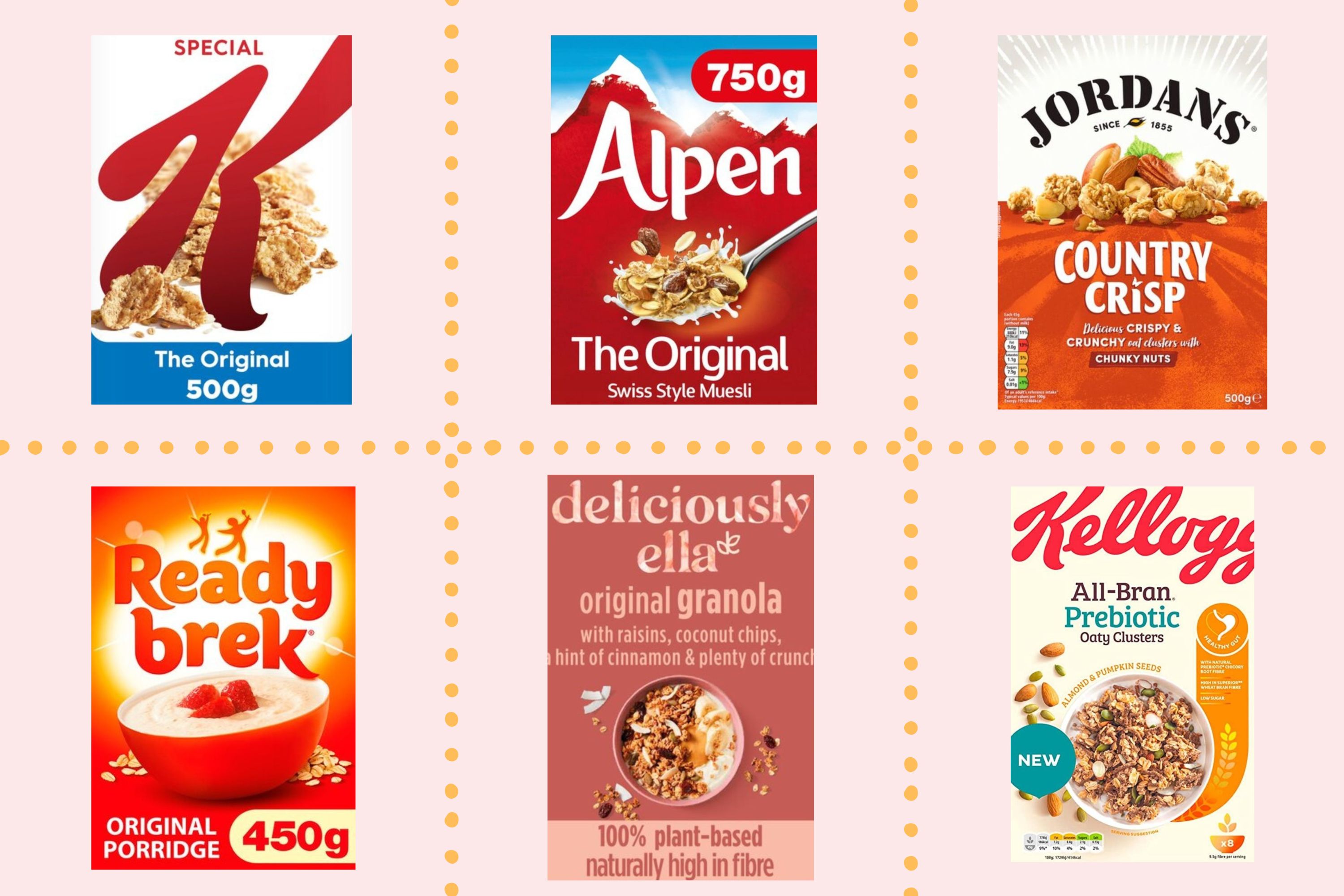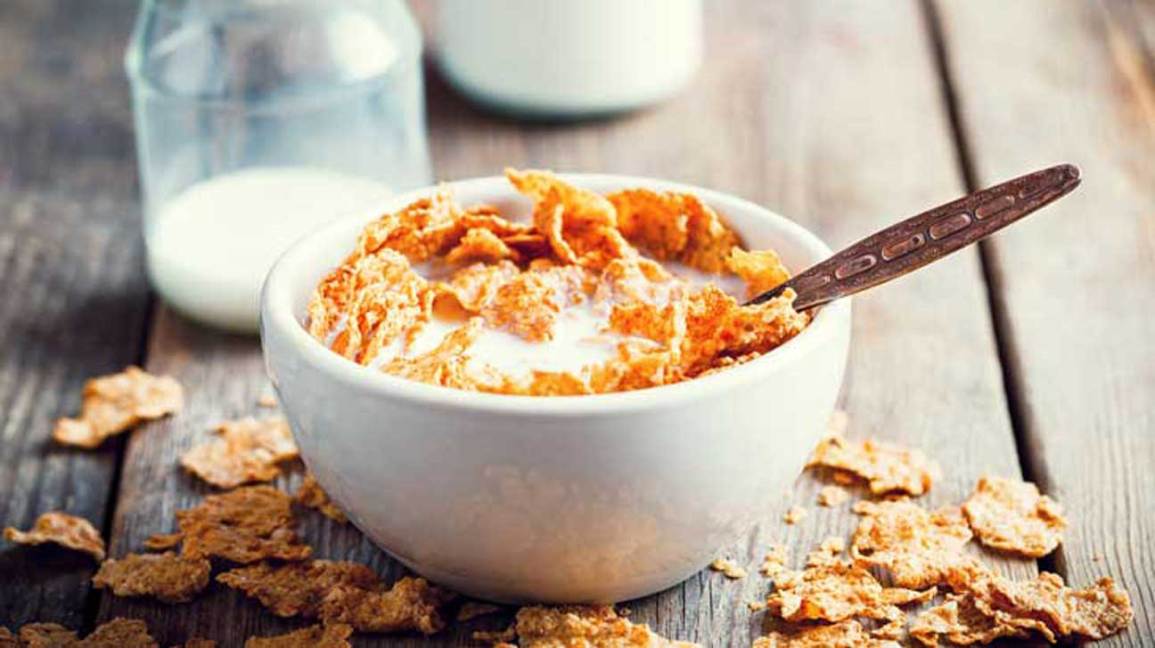What Cereal is Healthy to Eat? Whole grain cereals like oatmeal and bran flakes are healthy options. They are rich in fiber, vitamins, and minerals.
Eating a healthy breakfast sets the tone for the day. Whole grain cereals, such as oatmeal and bran flakes, offer numerous health benefits. These cereals are packed with essential nutrients, including fiber, vitamins, and minerals. They help in maintaining digestive health and provide sustained energy.
Choosing cereals low in added sugars and high in whole grains can improve overall wellness. It’s essential to read labels and opt for cereals with minimal processing. A bowl of whole grain cereal paired with fresh fruit and low-fat milk or yogurt can be a balanced and nutritious start to your day.
Introduction To Healthy Cereals
What Cereal is Healthy to Eat? Breakfast is the most important meal of the day. Choosing the right cereal can boost your energy. Healthy cereals provide essential nutrients and vitamins. They help in maintaining overall well-being. Let’s explore what makes a cereal healthy and how to choose one.
The Importance Of Breakfast
Breakfast kickstarts your metabolism. It helps you burn calories throughout the day. Eating breakfast helps in maintaining focus and concentration. A good breakfast keeps you full and prevents overeating later. Healthy cereals are a great breakfast option.
Criteria For Healthy Cereals
What Cereal is Healthy to Eat? Not all cereals are created equal. Here are some criteria to look for in healthy cereals:
- Low Sugar Content: Choose cereals with less than 5 grams of sugar per serving.
- High Fiber: Look for at least 3 grams of fiber per serving.
- Whole Grains: Ensure the first ingredient is a whole grain like oats or whole wheat.
- Low Sodium: Aim for cereals with less than 140 milligrams of sodium per serving.
- No Artificial Ingredients: Avoid cereals with artificial colors, flavors, or preservatives.
Here is a comparison table of some popular healthy cereals:
| Cereal Brand | Sugar (g) | Fiber (g) | Whole Grains | Sodium (mg) | Artificial Ingredients |
|---|---|---|---|---|---|
| Brand A | 4 | 5 | Oats | 130 | No |
| Brand B | 3 | 4 | Whole Wheat | 120 | No |
| Brand C | 2 | 6 | Quinoa | 110 | No |
Whole Grain Wonders
Whole grains are the unsung heroes of the cereal aisle. These grains keep all parts of the grain kernel. This includes the bran, germ, and endosperm. They offer a wealth of nutrients and benefits that make them a top choice for a healthy breakfast.
Benefits Of Whole Grains
Eating whole grains provides numerous health benefits. Here are some key advantages:
- Rich in Fiber: Whole grains are packed with dietary fiber. This helps in digestion and keeps you feeling full.
- Heart Health: These grains help reduce cholesterol levels. This supports a healthy heart.
- Essential Nutrients: Whole grains are a source of essential vitamins and minerals. This includes B vitamins, iron, and magnesium.
- Weight Management: The fiber content helps in weight control. It prevents overeating by making you feel full.
- Reduced Risk of Diseases: Regular consumption lowers the risk of chronic diseases. These include diabetes, heart disease, and certain cancers.
Top Whole Grain Cereal Picks
What Cereal is Healthy to Eat? Choosing the right whole grain cereal can be easy. Here are some top picks to consider:
| Cereal Brand | Main Ingredients | Benefits |
|---|---|---|
| Cheerios | Whole Grain Oats | Low in sugar, heart-healthy, high in fiber |
| Kashi GOLEAN | Whole Grain Wheat, Brown Rice | High in protein and fiber, low in sugar |
| Barbara’s Shredded Wheat | Whole Grain Wheat | No added sugar, high in fiber |
| Nature’s Path Organic Optimum Power | Whole Grain Oats, Barley, Flax | Rich in protein, omega-3, high in fiber |
Including these cereals in your diet can be a delicious way to stay healthy. They offer great taste and essential nutrients.
Low Sugar Stars
Many cereals are packed with sugar. Finding healthy choices can be hard. This section focuses on cereals with low sugar. These are the Low Sugar Stars.
The Sugar Trap In Cereals
Many cereals may seem healthy. But they hide a lot of sugar. Sugar can cause weight gain and other health issues. It’s important to check the sugar content before buying cereals.
Here is a list of common cereals and their sugar content per serving:
| Cereal Name | Sugar Content (grams) |
|---|---|
| Frosted Flakes | 12g |
| Fruit Loops | 10g |
| Lucky Charms | 10g |
Best Low Sugar Options
What Cereal is Healthy to Eat? Choosing low sugar cereals is key for a healthy diet. Here are some great options:
- Cheerios – Only 1g of sugar per serving
- Shredded Wheat – 0g of sugar per serving
- Plain Oatmeal – 0g of sugar per serving
These cereals not only have low sugar but also offer other benefits:
- Cheerios: Good source of fiber and whole grains.
- Shredded Wheat: High in fiber and no added sugar.
- Plain Oatmeal: Can be customized with healthy toppings.
Switching to low sugar cereals can improve your health. Always read the labels and choose wisely.

Credit: feedthemwisely.com
High Fiber Choices
Choosing cereals high in fiber can boost your overall health. Fiber helps with digestion and keeps you feeling full longer. It is important to pick cereals that meet your fiber needs.
Why Fiber Matters
Fiber is crucial for your digestive system. It aids in maintaining a healthy gut. Fiber helps prevent constipation and supports regular bowel movements. It also helps control blood sugar levels. Fiber reduces the risk of heart disease. Consuming enough fiber can help with weight management. This is because it keeps you feeling full for a longer time.
Fiber-rich Cereals For Your Diet
There are many cereals rich in fiber. Below is a table of some popular choices:
| Cereal Brand | Fiber Content (per serving) |
|---|---|
| All-Bran | 10g |
| Fiber One | 14g |
| Shredded Wheat | 6g |
| Oat Bran | 7g |
Consider these cereals to add more fiber to your diet:
- All-Bran: High in fiber, great for digestive health.
- Fiber One: Excellent fiber content, supports regularity.
- Shredded Wheat: Good fiber amount, made from whole grains.
- Oat Bran: Rich in fiber, helps lower cholesterol.
Incorporate these cereals into your daily routine. This can improve your overall health.
Protein-packed Cereals
Protein-packed cereals are great for starting your day strong. They keep you full longer and give you energy. Choosing the right cereal can boost your health and fitness goals.
The Role Of Protein
What Cereal is Healthy to Eat? Protein is essential for building muscles and repairing tissues. It’s also important for growth and development in children. Consuming enough protein keeps you feeling full and satisfied. This can help control your appetite and manage your weight.
Most cereals are high in carbs but low in protein. Selecting cereals with higher protein content can balance your diet. Make sure to check the nutrition labels for protein content.
Leading Protein Cereals
Here are some top protein-packed cereals that are healthy to eat:
| Cereal Brand | Protein per Serving | Additional Benefits |
|---|---|---|
| Kashi GoLean | 12 grams | High in fiber, low in sugar |
| Special K Protein | 10 grams | Fortified with vitamins and minerals |
| Nature’s Path Optimum | 9 grams | Organic ingredients, high in omega-3 |
| Cheerios Protein | 7 grams | Whole grains, low in fat |
These cereals offer a good mix of protein and other nutrients. They can be a part of a balanced breakfast. Add some milk or yogurt for extra protein.
- Kashi GoLean: 12 grams of protein, high in fiber.
- Special K Protein: 10 grams of protein, fortified with vitamins.
- Nature’s Path Optimum: 9 grams of protein, organic ingredients.
- Cheerios Protein: 7 grams of protein, whole grains.
Remember, always read the labels to check for added sugars. Choose cereals with more protein and less sugar for a healthy start to your day.
Gluten-free And Allergy-friendly Options
Choosing the right cereal can be challenging, especially with gluten or food allergies. Many cereals contain ingredients that can trigger allergies. This guide will help you find gluten-free and allergy-friendly cereals. Keep your mornings both tasty and safe.
Navigating Gluten And Allergies
What Cereal is Healthy to Eat? Understanding food labels is crucial. Look for certifications like “Certified Gluten-Free.” This ensures the cereal meets strict standards. Always read the ingredient list carefully. Some cereals might have hidden allergens.
Also, consider cross-contamination. Some brands process their cereals in facilities that also handle allergens. Choose brands that clearly state they avoid cross-contamination. This is vital for people with severe allergies.
Top Picks For Gluten-free And Allergy-friendly Cereals
Here are some top cereals that cater to gluten-free and allergy-friendly needs.
| Cereal Brand | Features |
|---|---|
| Chex | Gluten-free, No artificial colors, Nut-free |
| Enjoy Life | Gluten-free, Free from top 8 allergens, Vegan |
| Nature’s Path | Gluten-free, Organic, Non-GMO |
| Barbara’s Puffins | Gluten-free, Low in sugar, Kosher |
These brands offer a variety of flavors. You can enjoy chocolate, honey, or fruit-flavored cereals. Always check the packaging for the latest information.
- Chex: Known for its crunch and simplicity. Perfect for a quick breakfast.
- Enjoy Life: A great choice if you have multiple allergies.
- Nature’s Path: Offers organic options. Good for those who prefer natural ingredients.
- Barbara’s Puffins: Tasty and low in sugar. Good for kids.
Start your day with a healthy, safe, and delicious cereal. Your mornings will be worry-free and enjoyable.
Organic And Non-gmo Choices
Choosing the right cereal is crucial for a healthy diet. Organic and Non-GMO choices offer a safer, nutritious option. These cereals avoid harmful chemicals and genetically modified organisms. Let’s explore why these options are better for your health.
Understanding Organic Labels
Organic labels indicate the cereal is grown without synthetic pesticides. Farmers use natural methods to keep the crops safe. This means fewer chemicals in your breakfast.
Look for the USDA Organic seal. This ensures the cereal meets strict organic standards. Another label to seek is the Non-GMO Project Verified seal. This label guarantees the cereal has no genetically modified ingredients.
Best Organic And Non-gmo Cereals
Several cereals stand out for their health benefits. Here are some top choices:
| Cereal Brand | Organic | Non-GMO |
|---|---|---|
| Cascadian Farm | Yes | Yes |
| Nature’s Path | Yes | Yes |
| Barbara’s Bakery | Yes | Yes |
These cereals are both organic and Non-GMO. They are healthier choices for your breakfast. They contain natural ingredients and avoid harmful chemicals.
Choosing organic and Non-GMO cereals can improve your health. It supports farmers who use sustainable practices. Start your day with a bowl of these healthy cereals.

Credit: www.menshealth.com
Reading Nutrition Labels
Understanding nutrition labels helps you choose healthier cereals. These labels reveal the nutrient content, serving size, and ingredients. Knowing what to look for ensures you pick the best option for your health.
Key Nutrients To Look For
Focus on cereals rich in fiber. Fiber aids digestion and keeps you full longer. Aim for at least 3 grams per serving.
- Protein: Look for at least 5 grams per serving. Protein helps build and repair tissues.
- Whole Grains: Choose cereals made from whole grains. These are more nutritious and have more fiber.
- Low Sugar: Select cereals with less than 10 grams of sugar per serving. Less sugar means fewer empty calories.
Deciphering Serving Sizes And Ingredients
Check the serving size first. The nutrition information is based on this amount. It helps you understand how much you’re actually eating.
Read the ingredient list carefully. Ingredients are listed by weight, from highest to lowest. Choose cereals with whole grains as the first ingredient.
Avoid cereals with high amounts of added sugars and artificial ingredients. These can be harmful to your health.
| Key Nutrient | Recommended Amount |
|---|---|
| Fiber | At least 3 grams |
| Protein | At least 5 grams |
| Sugar | Less than 10 grams |
Incorporating Healthy Cereals Into Your Diet
Incorporating healthy cereals into your daily diet can be easy and fun. Choosing the right cereal helps you start your day with the right nutrients. Here’s how you can do it.
Creative Serving Ideas
Healthy cereals don’t have to be boring. You can mix and match to create exciting meals.
- Fruit Parfait: Layer your cereal with yogurt and fresh fruits.
- Smoothie Bowl: Blend your favorite fruits and top with cereal.
- Cereal Bars: Mix cereal with honey and nuts to make bars.
- Oatmeal Add-in: Sprinkle cereal over oatmeal for extra crunch.
Balancing Your Breakfast Plate
A balanced breakfast includes more than just cereal. Combining different food groups ensures you get a variety of nutrients.
| Food Group | Examples |
|---|---|
| Proteins | Eggs, Greek yogurt, nuts |
| Fruits | Berries, bananas, apples |
| Vegetables | Spinach, tomatoes, avocados |
Combining these items with your cereal can create a perfect breakfast. For example, pair whole-grain cereal with Greek yogurt and berries. This combination provides protein, fiber, and essential vitamins.
Remember, the key to a healthy breakfast is balance. Aim to include different food groups to meet your nutritional needs.

Credit: www.goodto.com
Frequently Asked Questions
What Are The Healthiest Cereal To Eat?
The healthiest cereals include oatmeal, whole grain flakes, bran cereal, and muesli. Choose options low in sugar and high in fiber.
Are Cheerios Healthy?
Yes, Cheerios can be healthy. They are low in sugar and high in fiber. Opt for whole grain varieties for better nutrition. Always check the label for added sugars.
Which Cereals Are No Longer Healthy?
Many cereals high in sugar, artificial colors, and refined grains are no longer considered healthy. Examples include Frosted Flakes, Froot Loops, and Cocoa Puffs. Opt for cereals with whole grains and low sugar for better health.
Is It Ok To Eat Healthy Cereal Everyday?
Yes, eating healthy cereal daily is generally fine. Choose whole grains, low sugar, and high fiber options for best results.
Conclusion
Choosing a healthy cereal can boost your overall nutrition. Focus on options rich in fiber and low in sugar. Whole grains are a great choice for sustained energy. Always check the ingredient list for hidden sugars and additives. Making informed decisions can lead to a healthier diet and lifestyle.




Leave a Reply